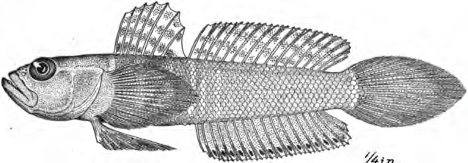By the NCFishes.com Team
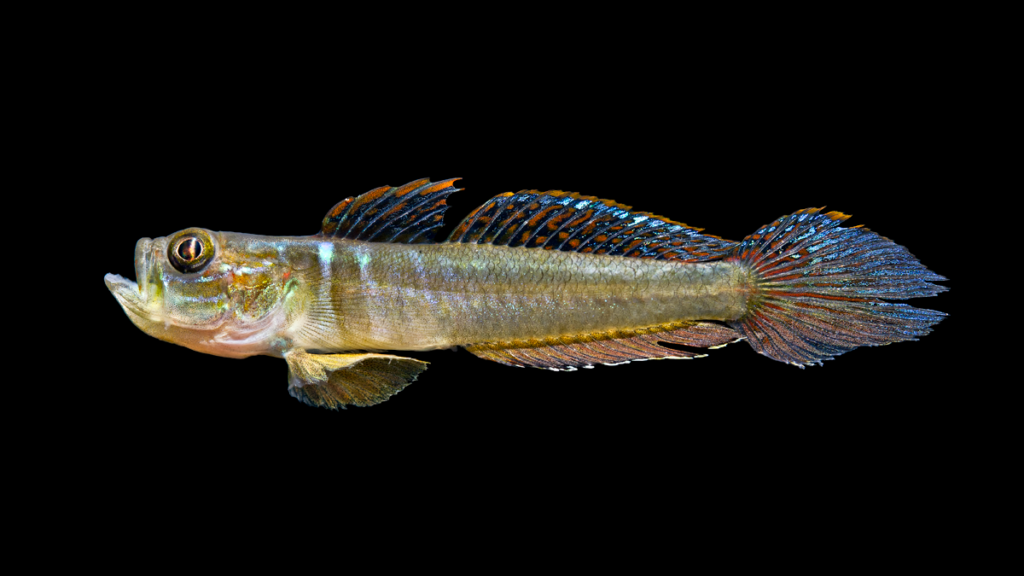
What exactly are gobies? To a freshwater-centric ichthyologist, gobies look like the marine equivalent of our freshwater darters (Family Percidae, https://ncfishes.com/freshwater-fishes-of-north-carolina/). In fact one of the species is named Darter Goby, Ctenogobius boleosoma, because of its resemblance to Tessellated Darter, Etheostoma olmstedi. But to the more widely learned and marine-centric ichthyologists, gobies are some of the most brightly colored and diverse family of fishes found around coral reefs. There are more than 220 genera and 1500 species worldwide primarily inhabiting shallow tropical and subtropical waters (Murdy and Hoese 2002). Along and off the North Carolina shoreline, one may encounter 24 indigenous species, 1 nonindigenous species, and 1 species who we are not really sure what species it is because of the condition of the specimen post-preservation (Table 1).
Table 1. Species of Gobies found in or along the coast of North Carolina.| Scientific Name/ American Fisheries Society Accepted Common Name | Scientific Name/ American Fisheries Society Accepted Common Name |
|---|---|
| Awaous banana – River Goby | Gnatholepis thompsoni – Goldspot Goby |
| Bathygobius soporator – Frillfin Goby | Gobioides broussonnetii – Violet Goby |
| Bollmannia sp. – Goby sp. | Gobionellus oceanicus – Highfin Goby |
| Coryphopterus glaucofraenum – Bridled Goby | Gobiosoma bosc – Naked Goby |
| Coryphopterus punctipectophorus – Spotted Goby | Gobiosoma ginsburgi – Seaboard Goby |
| Ctenogobius boleosoma – Darter Goby | Gobiosoma robustum – Code Goby |
| Ctenogobius saepepallens – Dash Goby | Lythrypnus elasson – Dwarf Goby |
| Ctenogobius shufeldti – Freshwater Goby | Lythrypnus phorellus – Convict Goby |
| Ctenogobius smaragdus – Emerald Goby | Lythrypnus spilus – Bluegold Goby |
| Ctenogobius stigmaticus – Marked Goby | Microgobius carri – Seminole Goby |
| Elacatinus xanthiprora – Yellowprow Goby | Microgobius gulosus - Clown Goby |
| Evermannichthys spongicola – Sponge Goby | Microgobius thalassinus – Green Goby |
| Evorthodus lyricus – Lyre Goby | Priolepis hipoliti – Rusty Goby |
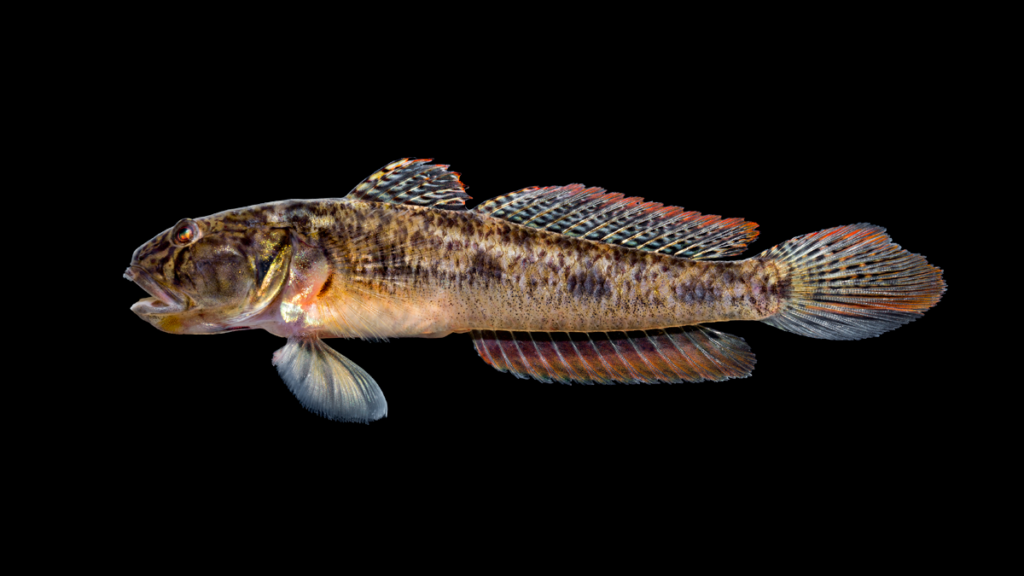
All species seem to be known simply and collectively as gobies. However there are American Fisheries Society-accepted common names (Table 1; Page et al. 2013) and each of the scientific (Latin) names actually means something (please refer to The Meanings of the Scientific Names of Gobies, pages 22-24).
Except for three species, most gobies are to be found along North Carolina’s coast (Maps 1-16) (NCFIshes.com; Tracy et al. 2020; [Please note: Tracy et al. (2020) may be downloaded for free at: https://trace.tennessee.edu/sfcproceedings/vol1/iss60/1.] Some of the species’ mapped distributions may be an artifact of their rarity as vouchered specimens at North Carolina Museum of Natural Sciences, or their rarity in North Carolina waters, or the difficulty in collecting specimens. Distributional maps, based upon vouchered specimens at the North Carolina Museum of Natural Sciences, are unavailable for Spotted Goby, Dash Goby, Goldspot Goby, Violet Goby, Code Goby, Seminole Goby, and Clown Goby.
Highfin Goby and Naked Goby occasionally stray into fresh waters (Maps 9 and 10; Tracy et al. 2020), but spend most of their lives in estuarine or marine waters. Three species, River Goby, Freshwater Goby, and Lyre Goby, can also be found in freshwater habitats (Maps 1, 6 and 8). Lyre Goby and Freshwater Goby have been found in the Cape Fear River basins as far upstream as near Riegelwood (Tracy et al. 2020). [Note: see Supplemental Maps 1-3, page 25, showing North Carolina’s 100 counties, 21 river basins, and 4 physiographic regions.]
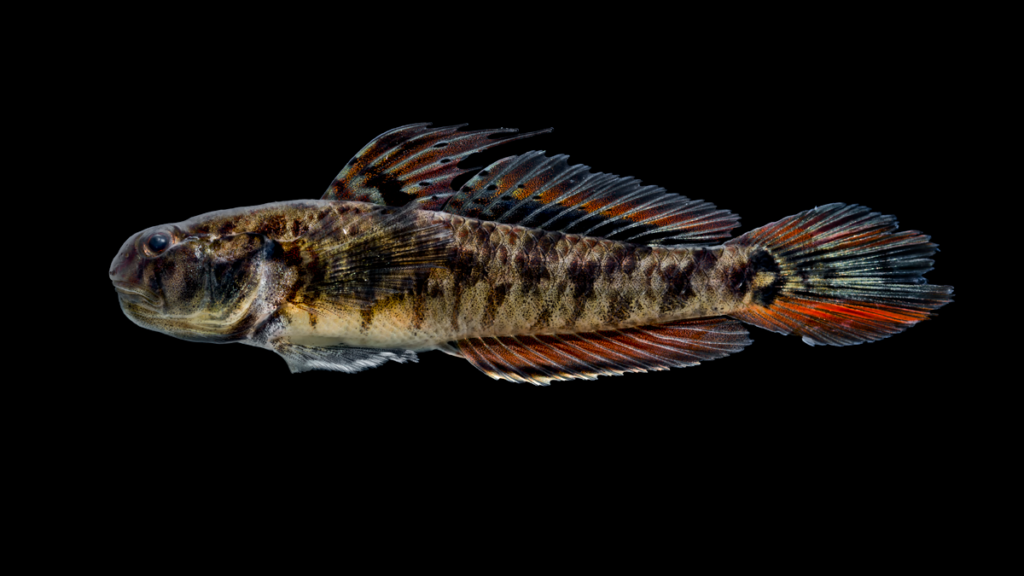
Most gobies range in size from about 40 mm to about 80 mm (1.8 inches – 3.2 inches, respectively). However, like all things, there are exceptions at both ends of the spectrum. In North Carolina the three smallest gobies are in the genus Lythrypnus (Dwarf Goby, Convict Goby, and Bluegold Goby) – they are only 20-25 mm (0.8 inch – 1 inch, respectively) in length. At the other end are five species that range in size from 150 mm to 500 mm (6 inches – 20 inches, respectively) – those are some big gobies! These five species are: 1) Violet Goby to 500 mm (about 20 inches), 2) Highfin Goby and River Goby to 300 mm (about 12 inches), and 3) Lyre Goby and Emerald Goby to 150 mm (about 6 inches) (Murdy and Hoese 2002).
Their occupied habitats are also variable, depending upon the species from shallow depths nearshore to offshore at depths more than 91 meters (about 330 ft.) in the case of Rusty Goby (Kells and Carpenter 2014). Most species can be found in coastal river mouths, in estuaries and bays with muddy, sandy, or grassy bottoms, or amongst submerged vegetation and oyster beds, or atop rock and rubble bottoms. One species, Sponge Goby, as its name implies, is associated with sponges. Species associated with coral reefs and rocky areas include Bridled Goby, Spotted Goby, Yellowprow Goby, Bluegold Goby, Convict Goby, and Rusty Goby (Kells and Carpenter 2014).
River Goby is our only nonindigenous species. It was unknown from North Carolina until a single specimen was discovered in a fish kill in 1996 from Burnt Mill Creek in Wilmington. In 2015, an apparently self-sustaining population was discovered in a stormwater retention pond in Morehead City in Carteret County (White Oak basin). This population has been present for at least six years, despite some mortalities from cold temperatures. In 2017 another population was discovered in an unnamed creek near the Visitors Center in Morehead City (Scott A. Smith, pers. comm.). All three locations (Map 1) are near North Carolina’s two shipping ports and this species may have been introduced from the release of ballast water (Tracy et al. 2020).
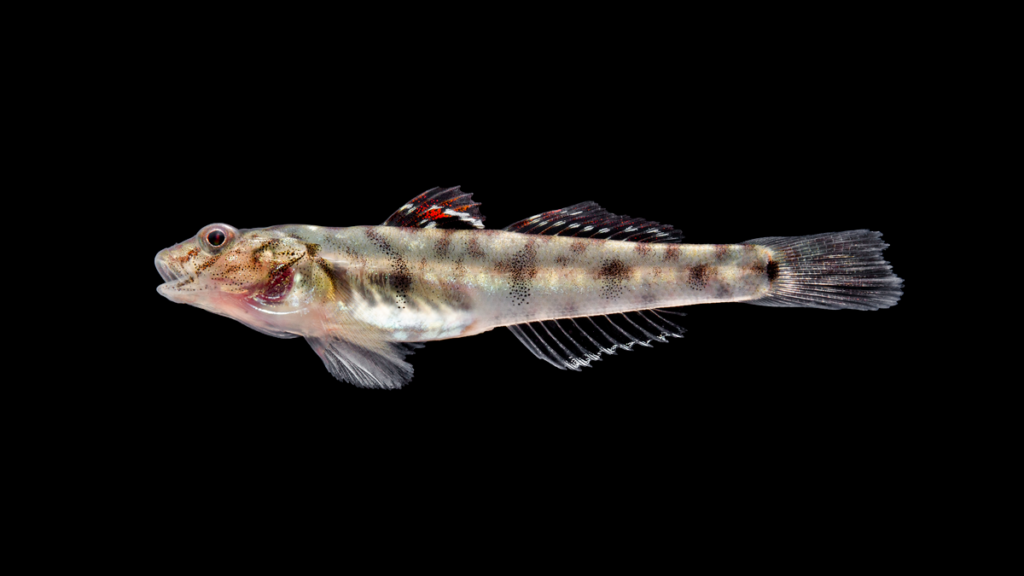
Because of their lack of commercial or recreational importance, none of the species is a federally- or state-listed species (NCAC 2017; NCNHP 2020; NCWRC 2017).
One final piece of North Carolina goby trivia: In 1907 Dr. Hugh M. Smith published the 453 page “The Fishes of North Carolina” (Smith 1907). This was North Carolina’s first truly baseline study of the fishes across the entire state. In it, Smith detailed 345 fresh and saltwater species, all described by other ichthyologists, except one species. Smith described that species, a goby: Microgobius holmesi and gave it the common name of Holmes’ Goby (Figure 1). It was named after Professor J. A. Holmes, former State Geologist and former director of the North Carolina Geological and Economic Survey, who had requested that Smith produce a popular guide to the fishes of North Carolina. The species was known from a single specimen collected in 1904 from Uncle Israel Shoal in Beaufort Harbor. Unfortunately, this species and the other species of Microgobius, M. eulepis Eigenmann & Eigenmann, that Smith listed as occurring also in Beaufort Harbor at the same shoal, were later synonymized by Birdsong (1981) with Microgobius thalassinus and today are known as Green Goby.
Figure 1. Microgobius holmesi, Smith 1907, Holmes’ Goby. Illustration from Smith (1907).
The identification of gobies is relatively straight-forward, but may benefit from the use of a dissecting compound microscope. Key characteristics for their proper identification include color and color patterns, length of dorsal fin, shape of the tongue, presence or absence of scales, scales cycloid or ctenoid, lateral scale row counts, dorsal fin, pectoral fin, and anal fin ray counts, dorsal fin spine counts, length of dorsal fin rays, and shape of caudal fin (please refer to the Identification Key to the Freshwater and Marine Gobies (Family Gobiidae) in North Carolina).
If you have troubles with your identifications, just send us (https://ncfishes.com/contact/) an e-mail and include as many quality digital photographs as you can along with all the pertinent locality descriptors so that we will know from where the fish came.
